|
4/23/2023 Comments Mood boosting skin care
Mood-boosting skin care can be defined as a skin care routine that includes products and/or tools and techniques which (may be specifically designed) enhance our mood and mental well-being in addition to improving the overall health and appearance of the skin. Research has shown that skin care is becoming more than just a physical experience, but also a therapeutic and emotional one. The role of mood-boosting skin care in providing self-care and supporting mental well-being has become increasingly important and has profound benefits. ESSENTIAL OILS These mood boosting routines typically incorporate products that have essential oils that help to relax, uplift, and calm the mind, which in turn, affects an individual's mood positively. However, I am not a big fan of incorporating essential oils in a skin care routine as they can be irritating, cause skin sensitivity, redness and breakouts. Irritation and redness can be signs of sub-clinical inflammation and speed up the biological degenerative process called skin ageing or skin inflammageing. It is not a surprise that dermatologists warn against the use of most essential oils on the skin. When it comes to essential oils, it is best to use them in a diffuser and not skin care. Facial oils can be beneficial however in a skin care routine. Click here to read more about the use of facial oils. A SPA "ME" MOMENT The ancient Greeks were the first to suggest that spas and bathing could be used for therapeutic purposes and not just for hygiene and cleanliness (which are basic requirements for good skin health). A warm relaxing bath isn't always good for skin health however (1). On the other side a 20-30 second cold shower after a workout or sauna encourages the release of cold shock proteins. Cold shock proteins may help you maintain your muscle mass when you're too busy to make it to the gym or when you're taking some planned time off your training routine. Some cold shock proteins are known to decrease inflammation and support faster wound healing. Cold water immersion also activates brown fat, tissue that helps keep the body warm and helps it control blood sugar and insulin levels. It helps the body to burn calories, hence to lose weight. Click here to read more. A SPA BONDING MOMENT As time is precious, meaningful time together with friends, your partner or your kids, can boost your sense of satisfaction and strengthen bonds. Funny anecdote was that I was "masking" with my son, who was at the time 12 years old. While relaxing he asked me what his mask was actually doing and I told him that it makes you look younger. He immediately asked me to remove it, scared he would look afterwards like 7 years old. 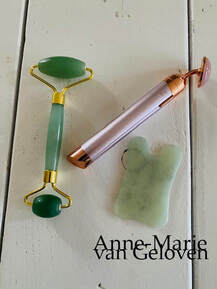
JADE ROLLERS & GUA SHA
I love using (refrigerated) jade rollers and gua sha, especially in the under eye area in the morning to reduce puffiness, increase the circulation and lymph drainage. It is important that the tools glide over the skin, don't tug and thus I apply a nourishing care product first. Moreover, applying skin care products using mindful techniques such as massaging in gentle circular motions can be therapeutic, providing a sense of calm and relaxation. SKIN CARE ROUTINES Mindful evening skin care routines have been shown to be particularly beneficial in unwinding after an overwhelming day, helping to reduce stress and induce better sleep. As it turns out, consistent routines provide more stability in your day, which is beneficial for your mental health and stress level regulation. Therewith every morning- and evening skin care routine is mood-boosting. DO GOOD, FEEL BETTER If you treat your self and your skin good, it will make your skin look better and even improve your quality of life. Self-care enhances feelings of self-worth, boost self-esteem and can even give a sense of accomplishment, is thus mood boosting, even without the use of aroma therapy or essential oils. Take care
Comments
3/19/2023 Comments Skin Flooding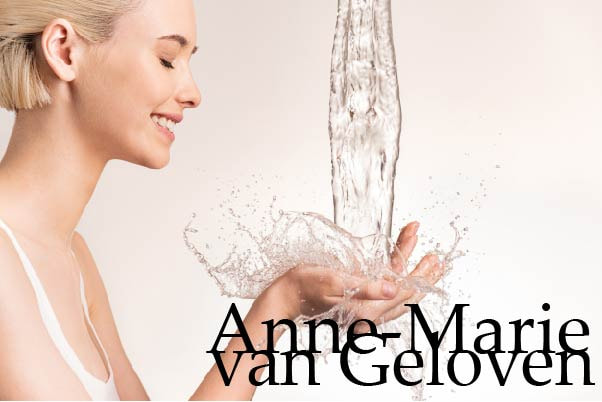
Skin flooding is the latest TikTok trend to counteract dry or dehydrated skin. It is basically layering hydrating mists, serums or creams to boost hydration in the skin. The idea is to start with a humectant-rich, lightweight products first and then add a thicker emollient to seal in the moisture on the skin. This is a trend which is suitable for all genders at all ages if products are chosen wisely.
DRY OR DEHYDRATED SKIN There is a difference between dry and dehydrated skin. Dehydrated skin is water-lacking skin, considered a skin condition and can be temporary, while dry skin is lipid-lacking skin and seen as a skin-type. All skin types (yes including oily skin) can be dehydrated. Picture yourself in an environment like airplane without any humidity. Our skin will react to this "dehydration condition" by either (over)production of oils and lipids to "protect" itself fro drying out or get very dehydrated. When the skin is producing a fierce amount of oils and lipids as compensation, you do not have lipid-lacking or dry skin, however your skin might be dehydrated. Lipid-lacking or dry skin has less ability to produce those oils or lipids and often has an impaired skin barrier. Lipids are the "mortar" between the bricks and when they are lacking, more water will evaporate from the skin and thus it loses hydration. FLOODING Therefore "flooding" without "suffocating" the skin, can be a good approach for dehydrated skin and all skin types at all ages. If you want to start your flooding regimen on damp skin, you start immediately after cleansing and toning or use a light mist containing hyaluronic acid and glycerin. Both ingredients are powerful humectants and attract and bind water to the skin surface. Afterwards you might want to first apply a hyaluronic acid containing serum and then a cream to "seal the deal". The difference between flooding and slugging is that flooding is focusing on maximising skin hydration or moisture, while slugging is focusing on prevention of trans-epidermal water loss by (semi)occlusion. Read more about slugging. HYALURONIC ACID Be aware not all hyaluronans are the same. There are different sizes. A macro-hyaluron (about 2000 kDa or larger) will lay on the surface of the skin and bind water there where the skin is losing the most water. A biologicaly active size hyaluron is the 52 kDa micro-hyaluron. This particular size molecule has proven to penetrate into the metabolic active layer of the epidermis, where is actually stimulates the keratinocytes (a certain skin cell) to produce +209% more hyaluron. This can be enough when you are young as the decline of hyaluron in the skin starts first in the epidermis. Be aware it is NOT recommended to use a hyalruon size below 30 kDa in skin care. Hyaluronic acid has the ability to bind and attract water up to 10.000 times is molecular weight, are great to plump up the skin, however the smaller sizes have a different function and can actually harm the skin by for example causing inflammation. LINES AND WRINKLES If you get a bit older, also the dermis will lose it's most important filling substance (hyaluron). There is another skin cell type which can be stimulated to produce more called the fibroblast. This cell is a key cell in the junction of the epidermis and dermis and the dermis, so deeper layer. The powerful anti-oxidant and bio-active Glycine Saponin or abbreviated Saponin can bio-stimulate this cell to produce +256% more skin's own hyaluron, +49% more collagen and +19% more elastin. Moreover, there are products on the market which contain all of the above PLUS Enoxolone. Enoxolone has the ability to inhibit the activity of an enzyme called HYAL1 >50%. HYAL1 is one of 6 different hyaluronidase enzymes which degrate skin's own hyaluron, hence eliminate it from our skin. These enzymes get more active in sun-exposed or mature skin and are partially responsible why our skin will lose hyaluron as we age. Together with the anti-oxidant Saponin, Enoxolone can slow down the elimination of skin's own hyaluron via 2 complimentary pathways: physical and enzymatic degradation. With other words, products containing 2 different sizes of hyaluron, Glycine Saponin and Enoxolone will fill, stimulate and defend skin's own hyaluron in both the epidermis (top layer) and the dermis (middle layer) of the skin. Great for dehydrated and early or visible signs of ageing, like fine lines and (even deepest) wrinkles. DAY AND NIGHT For daytime I would highly recommend a cream with protective SPF and for nighttime a product containing regenerative and barrier repairing Dexpanthenol or Pro-Vitamin B5. Anti-oxidants are good in every day and night time routine. If you want to use a refreshing hydrating mist, there is only one product with hyaluronic acid I recommend and it is Eucerin Hyaluron-Filler Mist Spray. The reason for this is that it has a skin friendly pH unlike (thermal) water. Water has a pH of 7-8 which is like a slight "insult" to the skin's healthy pH every time you spray. With the Hyaluron-Filler Mist Spray, you rebalance the skin's healthy pH level and use it as much as you like. pH to me is the foundation of good skin health. I have written a few pH related blog-posts and if you are interested simply click on the "read more" button below. Take care 3/16/2023 Comments Why slugging should not go viral
One of the current trends in skin care which I don't recommend for most skin types is "slugging". It means that a thick layer of an occlusive or semi-occlusive petrolatum-based product is applied most often shortly prior to bedtime.
One of the benefits of slugging is that this thick layer is acting like an extra barrier for the skin, hence reducing trans-epidermal water loss and penetration of particle matter or irritants. However, for a normal, combination or oily skin with an intact barrier slugging doesn't make any sense and will increase the risk of the development of milia (milk spots) are small, white cysts on your skin especially seen in the under-eye area, comedones (white - or blackheads) and worse papules (inflamed bumps) or pusteles ( a papule with a white or yellow tip). Moreover, a thick layer of product will rub off on your pillow case during the night. Slugging might make sense if your skin barrier is compromised (not intact), for example after a chemical peeling, more invasive laser treatment, over-exfoliation, or when you have extreme dry (lipid lacking) or dehydrated (water lacking) skin. It might also help to prevent irritants or allergens to enter the skin, hence decrease barrier related skin (hyper)sensitivity. However, I would "slug" very consciously and on recommendation of the dermatologist or plastic surgeon after a procedure as there are fantastic products available in the pharmacy or drugstore for (hyper)sensitive, (extreme) dry or dehydrated skin without risking slugging-related skin problems. Instead of a 100% petrolatum-based product, Aquaphor might be a better option at all times (also extreme cold weather), as it doesn't contain water (no risk of freezing), does contain humectants (they can bind and attract water), is semi-occlusive (protects but still "breaths"), is dermatologist recommended, affordable, available in a spray (no touch), tube, or tub and very well researched (evidence based) for a large variety of purposes. Take care 12/15/2018 Comments Aquatic wrinkles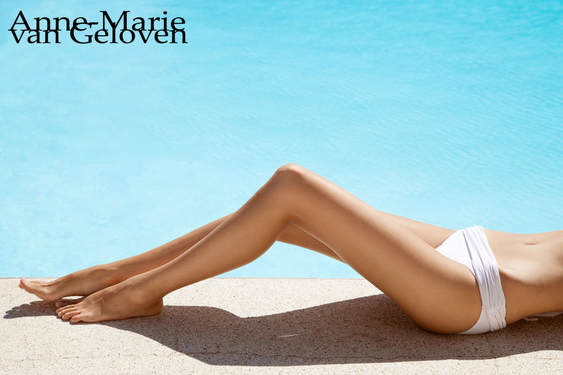
After about spending some time in bathtub or in the pool, we can notice that our skin on particularly finger tops and toes start to wrinkle up. This wrinkling effect is believed to have a function.
When wet, things tend to be more slippery and our sophisticated skin is designed to counteract this by wrinkling up in a pattern optimised to provide a drainage network that improves grip, much like the tires on a car according to a study. Link to original publication. However, other studies would contradict that there would be a functional benefit for so called aquatic wrinkles. The osmosis theory Water molecules moving trough a semipermeable membrane from a low concentration area to a high concentration area is a process called osmosis. The shrinking and expanding effects of osmosis takes place simultaneously outer layer of the skin, causing wrinkles. The skin's outermost layer is also known as stratum corner could be responsible for this wrinkly reaction, The top layer of our skin consists of dead corneocytes. The longer these cells are attached to the skin, the bigger they are. The size of the corneocytes we actually use to objectively measure the skin's renewal and desquamation (shedding of cells) process. These dead (keratin containing) skin cells may absorb water and swell. The lower layer with living cells doesn't swell up. As top layer (which is increased in size) is still attached to the layer beneath, a wrinkly pattern is formed. The layer of dead skin cells is thicker at the palms of our hands and soles of our feet, the wrinkling effect is more evident. This response occurs more quickly in freshwater than seawater. Moreover, when we are exposed to water for a longer time, the water-repelling film on top of the outer layer of the skin may get impaired. The sympathetic nervous system / microcirculation theory It's known that there is a relationship between the wrinkling-effect and blood vessels constricting (narrowing) below the skin. When hands and feet are soaked in water, the nerve fibres in the skin shrink and the body temperature regulators loses volume. Therewith the top layer of the skin is pulled downward and the wrinkling pattern is formed. It is proven that wrinkling-effect response is impaired, if the nerves and/or blood vessels are damaged. Therewith the wrinkling effect can even be used to determine proper functioning of the sympathetic nervous system and/or skin's microcirculation. There is evidence that the wrinkling effect is impaired in patients suffering from diabetes: link to article. Regardless the cause, aquatic wrinkles disappear fast and the skin returns to normal once the water has evaporated. Take care. 7/22/2018 Comments Skin care with something blue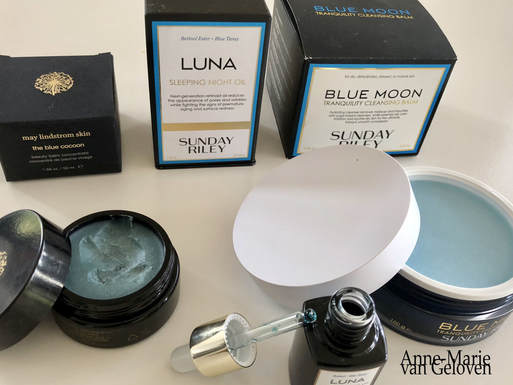
Lately I was trying out several skin care products with a very similar smell, which I actually started to appreciate during my evening skin care routine.
Usually, an overpowering fragrance in a product puts me off, however I consider this one soothing. The (in my opinion) pleasant odour comes from an ingredient called Tanacetum Annuum or Blue Tansy (Moroccan Blue Chamomile - not to be confused with Tanacetum Vulgare) and is found as the signature ingredient in some more luxury "Blue" products like May Lindrom's beauty balm concentrate called "The Blue Cocoon", Sunday Riley's tranquility cleansing balm called "Blue Moon" (Blue Tansy Leaf oil) and her sleeping night oil called "Luna". All products are relatively "oily" and you only need the littlest amount. Blue Tansy is "calming", as it supposed to have anti-inflammatory and anti-allergenic, anti-histaminic and anti-fungal properties. Tanacetum Annuum is an essential oil with a very dark blue collar due to chamazulene. The aromatic description is sweet, warm fruity, with subtle floral, camphorous and herbaceous undertones. It's most often mixed in with other oils or ingredients to dilute it, as the recommendation is not to use concentrations above 5%. Although it has anti-inflammatory properties, some might have intolerance for it as it contains camphor, which can cause sensitivity. Therefore, I would not recommend to use multiple products containing Blue Tansy in conjunction. Pure Blue Tansy oil is not easy to get hold of, thus an expensive ingredient. If I was asked choose one product, I would pick Sunday Riley Luna sleeping night oil which also contains Retinol. Luna is easy to use and incorporate in a night time regimen, is less expensive when compared to May Lindrom's "The Blue Cocoon", very popular amongst "beauty guru's" and receives many positive reviews. Alternatively, there are other evidence based skin care ingredients with proven anti-inflammatory properties, for example Arctiin (anti-inflammageing, stimulates hyaluronic acid and collagen production) and Licochalcone (also powerful anti-oxidant). They don't have the blue colour or "calming" odour, which some may find offensive. Hope you enjoy healthy skin & take care. 7/15/2018 Comments Facial oils bad for skin?!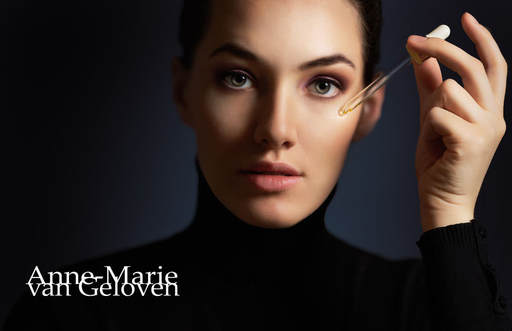
Facial oils are a trending skin care product at the moment, loved and recommended by many "beauty guru's" and skin care experts. This is why I found it very interesting to read a comment written by a well respected dermatologist claiming that face oils would stifle skin renewal and exfoliation and would make skin dull over time. She must have a reason why she is saying this, and that's why I looked into this a little bit deeper.
To start with, I've done own research (not just me) with a facial oil, included many testers and found many benefits and no draw backs during the duration of the study. Moreover, I jumped out of my chair (literally) when I saw the visible results from the clinical photography, no joke! We've found that the oil (a combination of Argan oil and Lady's Thistle oil) improves moisture, elasticity and firmness, supports skin resilience, making the skin feel smooth and look more radiant. There was even a reduction of comedones detected. The results were published in a poster, accepted by the European Academy of Dermatology and Venereology in 2016. If you are an impatient person, and demand a fast answer, I can spill the tea right now: I've found no data to support that facial oils would stifle skin renewal and exfoliation, but the opposite. Moisturisers absolutely influence the skin barrier function and TEWL (transepidermal water loss - which is used to measure the skin barrier function). A good barrier function (confirmed by low TEWL), positively contributes to the skin cell renewal process, which includes skin exfoliation process. Very dry skin has an increased TEWL, and so does very well hydrated skin. There is simply more water on the skin surface to evaporate. A high TEWL with very well hydrated skin can therefore give the impression of an impaired barrier function and thus give a "false positive". This phenomenon is nicely explained in a publication by Marie Loden "Effect of moisturizers on epidermal barrier function". Looking at non fragrance plant oils also called fixed oils, there are many and they are all different, so it's impossible to generalise. Many plant oils, like almond, jojoba, soybean and avocado oils mostly remain on the skin surface. Even without penetrating deeper into the outer layer of the skin (called epidermis), the occlusive effect of plant oils will reduce water evaporation from the skin and help the growth of the cells of the top layer called keratinocytes. They actually support the skin barrier and therewith skin cell renewal. Part of the skin cell renewal is a process called desquamation, which is skin's natural exfoliation of dead skin cells. Helping this process will make skin appear more radiant and smooth, not duller. The benefits of plant oils are supported in many publications, one of which is found in the International Journal of Molecular Sciences anti inflammatory skin barrier repair effects by Tzu-Kai Lin 2017. Argan oil One of the most popular and well researched fixed oils is organ oil. It contains oleic and linoleic fatty acids. Both are part of our skin's natural intercellular lipid-enriched matrix or skin barrier. Linoleic acid (an omega 6 fatty acid) is in fact the most abundant polyunsaturated fatty acid. Our skin barrier is protecting our skin from water loss and penetration of external agressors. Thus the skin barrier keeps the good stuff in and bad stuff out. Linoleic acid plays a direct role in maintaining the integrity of this skin barrier. Some research shows that oleic acid may indeed disrupt the skin barrier and act as an permeability enhancer, helping other ingredients to penetrate deeper. When oleic acid is continuously applied, it could lead to barrier problems. Another ingredient in argan oil is tocopherol or vitamin E. Tocopherol is well known for it's antioxidative effect (neutralising damaging free radicals from pollution or sun which cause premature ageing) and lesser known for supporting the skin barrier. Daily topical application of argan oil (the finished product which contains multiple ingredients) has shown to improve skin elasticity (firmness), improve the skin hydration by restoring the barrier function and maintaining water-holding capacity. Furthermore it has a softening and relaxing effect on skin. Lady's Thistle oil The oil of the Milk Thistle plant (also known as Silybum Marianium) is a common ingredient in anti-aging skincare. It contains skin barrier supporting Linoleic acid and is known to nourish skin and improve radiance. Facial oils are certainly not for everybody, but in general skin will benefit from a cold pressed fixed plant oil or a mixture. Don't smother skin with oils, just apply a few drops by itself on the skin prior or after your moisturiser, or mix a few drops with your moisturiser of foundation. Hope you enjoy radiant skin & take care. 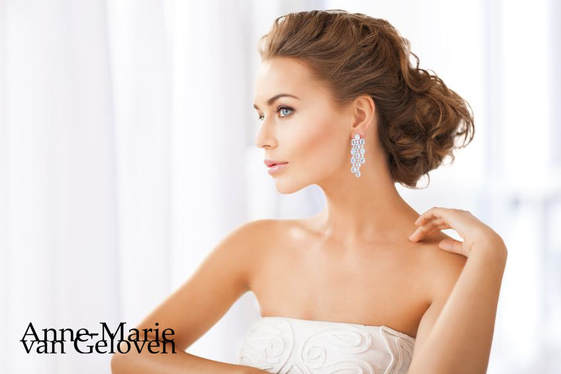
Anything you don't enjoy using or doesn't cater to your needs, is not worth buying.
Skin care is personal and there is a good product for all wallet sizes. However, is a luxury product better than a more affordable one? Is expensive the best? There are actually many factors influencing the prize of a product, other than the prestigious brand-name and advertising costs. Note: This content will mainly apply to skin care catering to the need of healthy, thus not problematic skin types. Problematic (or diseased) skin needs special care which usually is not found in the prestige or luxury skin care segment. Realistic expectations If you are disappointed by the results your skin care products, you might not have bought the right product for you. Make sure that your understand your skin type. There is also a change that you might have too high expectations of what skin care can actually do for you. Your skin will definitely benefit from a good skin care regimen with the right product(s). However, don't expect a metamorphosis, especially not from one day to the next. There are limitations to what skin care can do for your skin and actually what skin care is allowed to do. These rules apply for all skin care products. Formula Some very excellent skin care ingredients are expensive, however there are many very good ingredients which are affordable. Expensive ingredients can be useless "actives" in skin care, and "sound" appealing. Usually "rare" ingredients are expensive, but not all rare ingredients are "the best" actives. The majority of active ingredients only give visible or noticeable results in optimal concentrations. Many skin care products in the prestige or luxury skin care category have long INCI lists (ingredient lists). This will increase the price of the product, but does not necessarily mean that this is the right skin care for you. Furthermore, there is more to a formula than an ingredient list! If the end products texture (also called galenics) is too greasy or too light for your liking, you might not enjoy using the product, and it is not worth the splurge. Luxury brands invest in pleasurable textures of the formula to ensure a positive user experience and high repurchasing rate. A nice texture, doesn't necessarily ensure high performance of a product. Actually the more occlusive products (sometimes regarded as greasy or heavy), are commonly well performing in preventing transepidermal water loss, thus hydration. Note: especially with very long ingredient lists it is highly recommended to try the product before you buy, particularly if you have sensitive skin, as the risk of a skin reaction is increased when the number of ingredients is high. Check also if the product was tested and proven suitable for sensitive skin in this case. Innovation & technology New active ingredients may be exclusively developed by a company and it took them a lot of time, effort and money to collect enough data and proof that this particular active ingredient is effective and safe to use. Products containing such a (probably patented) ingredient can be more expensive than products with more generic frequently used ingredients. Sometimes expensive technology is especially developed or used to improve the formula, texture or container. Packaging Formula's may need a special container or dispenser to be stored appropriately. This is more expensive than a simple standard packaging. Some containers are only luxury and aim to look amazing in your bathroom or on your dresser. Others might be very "inviting", quick and easy to use. If this is what you prefer and enjoy, it might be worth the splurge. Evidence based Evidence is in my opinion compulsory, however not always scientific. Real proof and particularly scientific proof or clinical proof is expensive and time consuming. The best proof is a combination of scientific publications (in peer reviewed journals) and "product-in-use" tests (most similar to daily use) with large representative groups. A claim xx% of testers agree with a panel of 6 or 25 testers, is not enough to be significant. If you want certainty about the benefits of a product, a formula which has proven to be very effective and well tolerated might be worth the splurge. Usually (not always) brands that are recommended by or sold through dermatologists, aesthetic doctors or health care providers have conducted more rigorous research to provide the doctors with evidence, so they feel confident in recommending the product. Likeability brand Some brands have a great story, background, founder and thus a high likeability or appeal. Some huge companies producing large quantities may have lower production costs per product than small companies producing a limited number of products at an external supplier. Some brands "harvest" their own ingredients, have an intense auditing procedure for suppliers or special requirements for the ingredients they use. These factors influence the price of the product. It's certainly not worth the splurge, if you don't like the brand or the company behind the brand. If you have special wishes or requirements, you might be willing to pay for those. Indulge If you love special skin care, indulging "me-moments" and therewith skin care is high on your priority list, you will look at a pricy skin care purchase very differently from someone who just wants an effective moisturiser. If the product or the purchase makes you more happy and you it's use, it might be very well worth the splurge. Need Last but not least, any purchase you make only makes sense if the product fits your needs (skin type and concerns) and your skin care regimen. Try before you buy Some expensive high end products may be worth the splurge, if you enjoy them too. However, there are good affordable alternatives available. The most expensive isn't per se the best or the best for you. Do some research on the product and check reviews from customers. I would recommend to ask a sample and try every product before you buy it and preferably apply it first on the area where you want to use it. For example: applying a product on your hand in the store is not the same as trying it on your face, neck or décolletage! I apologise for the length of this blog post, but the answer is not so easy. Any purchase you make depends on what your are looking for, are willing and able to spend. Invest in proper cleansing before applying any serum or care. If the skin care product is so expensive that you are hesitant to actually use it and you know that it will sit in your bathroom untouched, it's not worth to buy it. If you already own such a product, rather use it and keep the empty container on display. Hope you enjoy and use your skin care. 7/8/2018 Comments Wellness not skin friendly?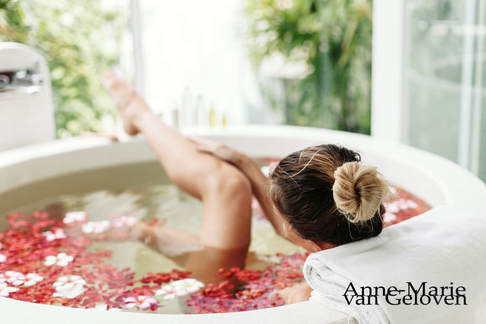
Long showers and bathing, though considered wellness or “home spa” experience, may actually cause a major disruption to our skin’s pH and skin barrier. The same goes for swimming (in salty sea or pool with chlorine).
These activities increase the risk of skin sensitivity and dryness. Water has a pH of 7-8 while our skin’s optimal pH balance requires a pH ~5. To make long showers and bathing a more a skin friendly experience, it is highly recommended to use non-alkaline or slightly acidic gentle cleansers (preferably with a pH ~5). If you have time, apply afterwards a pH rebalancing body lotion or butter. Your skin will surely appreciate it. I would personally never even consider applying an alkaline body product, as it might take the skin several hours to rebalance it’s pH on a large surface. Instead of hydrating your skin, you may in fact increase the risk of water loss; which is a waste of precious time and (expensive) product. Surely, I don't want to discourage anybody from enjoying swimming, relaxing long showers and baths! Just give your skin a "little love" afterwards. |
CategoriesAll Acne Ageing Aquatic Wrinkles Armpits Biostimulators Blue Light & HEVIS Cleansing CoQ10 Cosmetic Intolerance Syndrome Deodorant Dermaplaning Diabetes Dry Skin Evidence Based Skin Care Exfoliation Exosomes Eyes Face Or Feet? Facial Oils Fibroblast Fingertip Units Gendered Ageism Glycation Gua Sha Hair Removal Healthy Skin Heat Shock Proteins Hormesis Humidity Hyaluron Hyaluronidase Hypo-allergenic Indulging Jade Roller Licochalcone A Luxury Skin Care Lymphatic Vessel Ageing Malar Oedema Menopause Mitochondrial Dysfunction Mood Boosting Skin Care Neurocosmetics Ox Inflammageing PH Balance Skin Photo Biomodulation Polynucleotides Psoriasis Regenerative Treatments Review Safety Scarring Sensitive Skin Skin Care Regimen Skin Flooding Skin Hydration Skin Senescence Skip-Care Sleep Slugging Sunscreen Tanning Under Eye Bags Vitamin C Well Ageing Skin Care Wound Healing Wrinkles
Archives
April 2024
|



 RSS Feed
RSS Feed
